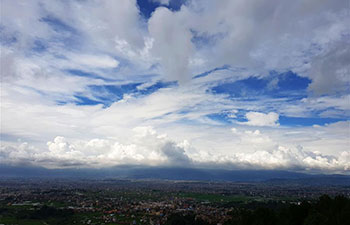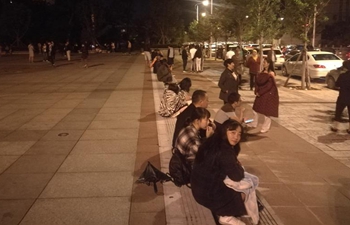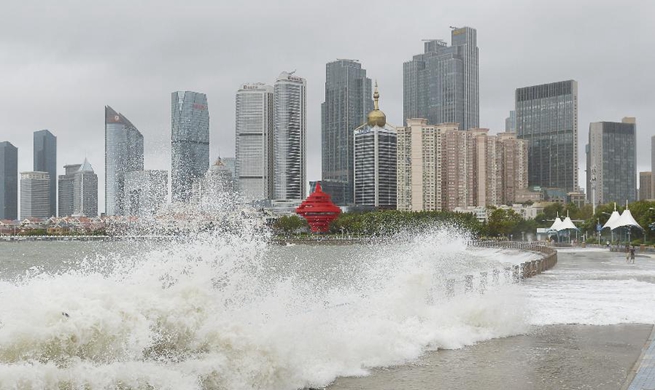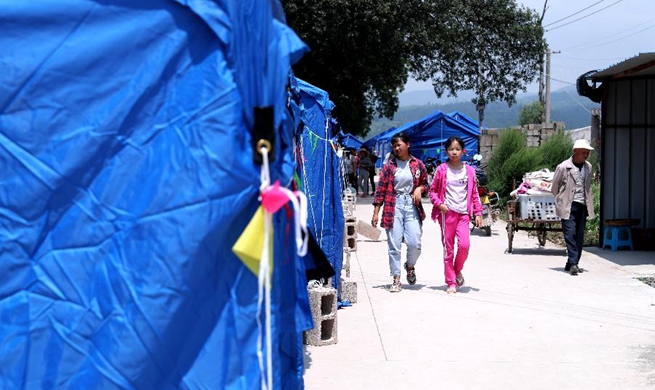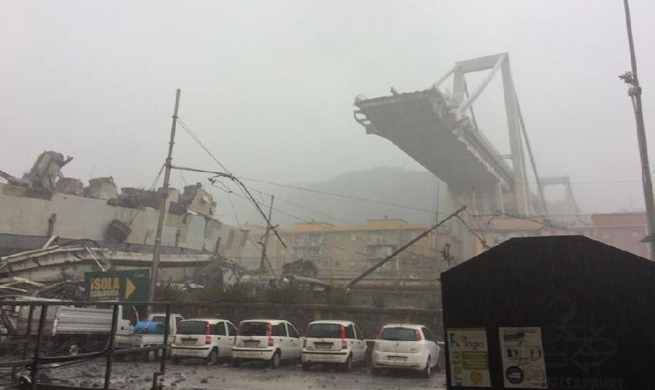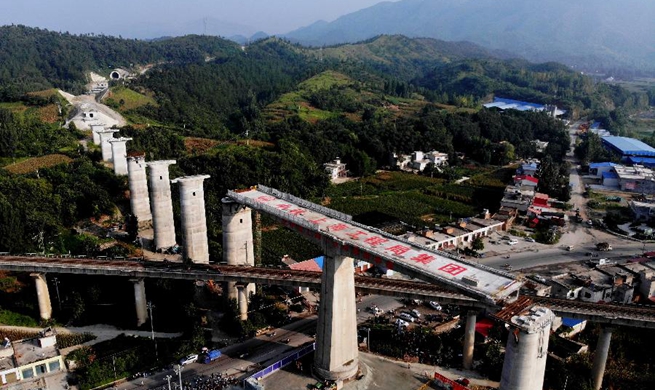ROME, Aug. 14 (Xinhua) -- Tuesday's deadly collapse of a bridge is likely to cause the Italian government to reevaluate policies on infrastructure development and maintenance, analysts said.
The Morandi Bridge, west of the northern Italian port city of Genoa, collapsed during a violent storm around noon local time Tuesday with around 30 vehicles on it, according to Angelo Borrelli, head of Italy's Civil Protection Agency. As of late Tuesday, police reported at least 30 dead, though the number could continue to rise as search and rescue operations continue.
The bridge is part of the A10 highway, a key highway that links the northern regions of Liguria, Lombardy, and Piedmont. At least 100 meters of highway, the main span of the bridge, caved in. Hours after the collapse, vehicles abandoned by their drivers remained on the still-standing part of the structure.
Matteo Pucciarelli, from the Italian newspaper La Repubblica who reported from the area, reported via video that the scene looked "apocalyptic" ... "as if a bomb had exploded."
Italy's new government responded quickly to the tragedy: Prime Minister Giuseppe Conte said he would travel to the scene, while Minister of the Interior Matteo Salvini and Minister for Infrastructure Danilo Toninelli both used social media to show their support.
Police reports indicated the 51-year-old bridge collapsed during violent storms pounding the area, with winds gusting as much as 60 kilometers per hour (37 miles per hour). At least one Italian media report said the bridge may have been struck by lightning just before beginning to crumble.
Though the conditions were extreme, Anders Rasmussen, an infrastructure consultant and author based in Copenhagen, Denmark, said they should not have been sufficient to force a bridge the size of the Morandi Bridge to collapse.
"Bridges like this are built to withstand far stronger winds or even floods, earthquakes, or vehicle accidents," Rasmussen told Xinhua. "It could be that the bridge was not maintained as it should be."
Autostrada per l'Italia, the Italian highway operator responsible for the Morandi Bridge, said in a statement Tuesday that the structure was undergoing maintenance, but it stated that the maintenance work was unlikely to have been a cause of the collapse. The company said it would conduct an "in-depth analysis" of the event to determine what went wrong.
A 2011 report from Autostrada per l'Italia indicated the bridge was in decay and in need of immediate repair. "The volume of traffic provokes an intense decay of the Morandi Bridge on a daily basis," said the report.
Rasmussen said the tragedy could convince the Conte government to direct more money toward infrastructure maintenance and testing.
According to early reports on the country's 2019 budget, infrastructure spending is expected to remain unchanged compared to 2016 and 2017, and lower than 2015.
"Resources spent on infrastructure should rise every year to keep pace with accumulated use and a growing population and economic activity," Rasmussen said. "Almost every country in the world should be spending more than it does to maintain and expand its infrastructure."




